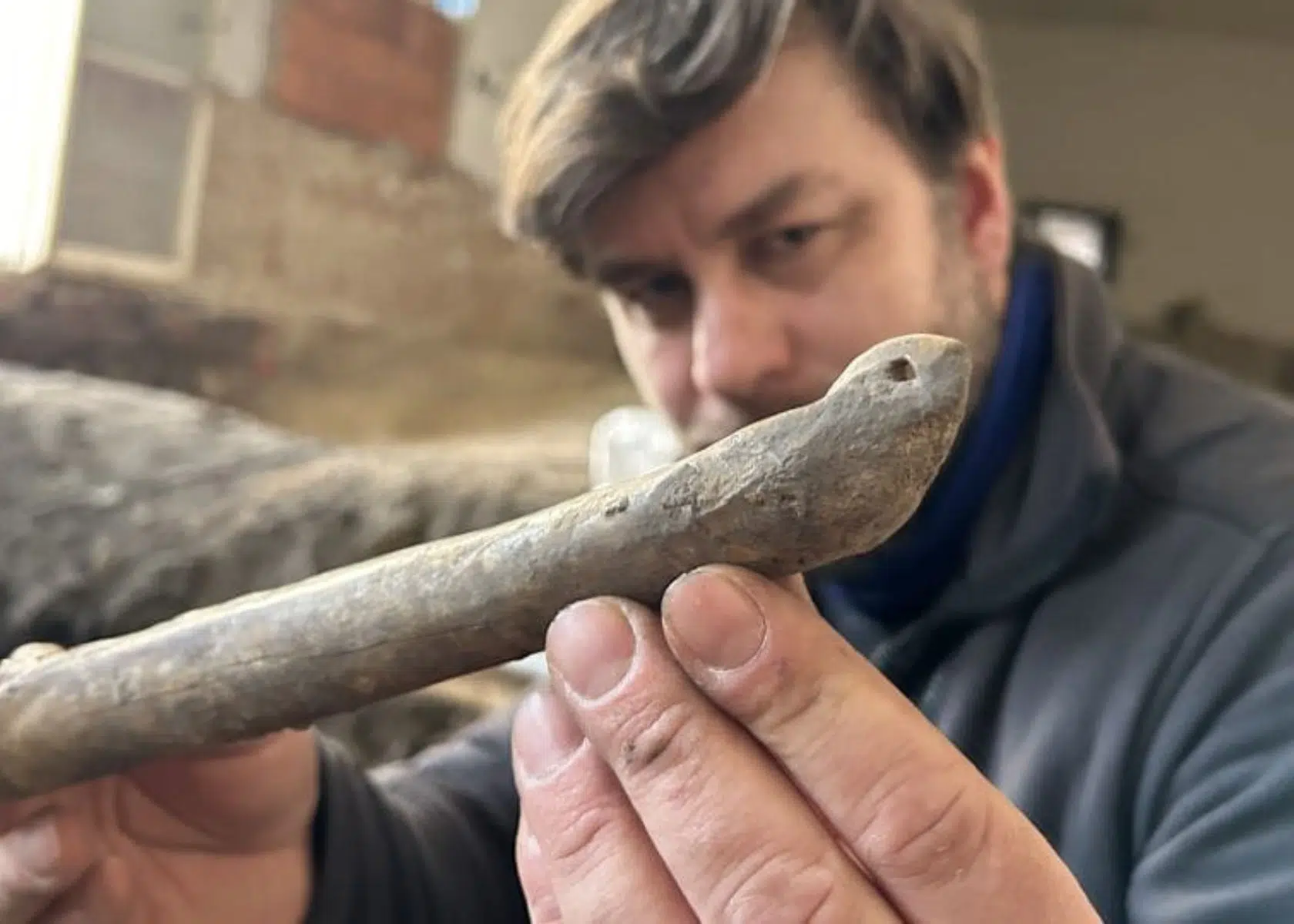
In Přerov, Czech Republic, archaeologists at the Comenius Museum have discovered a thousand-year-old ice skate made of animal bone. This find came during their rescue dig in the city’s Upper Square.
The skate, probably crafted from a horse’s shinbone, was found alongside pottery pieces from the 10th or 11th century. Initially, this area consisted of small settlements by the Bečva River branches.
Over time, it grew into a fortified square and fortress, under the rule of Polish King Boleslav the Brave, according to Archaeology Mag.
Ancient bone skate to travel through frozen surfaces
Zdeněk Schenk, an archaeologist on the excavation team, describes the skate’s design as both straightforward and clever. It’s curved with holes drilled into it, so a strap could be attached.
“The object has a specific shape. On one side, it is curved into a tip which has a hole drilled in it and there is another hole at the back. They were used to thread a strap through, which was used to attach the skate to a shoe or to a wooden sledge,” said Schenk.
This strap would have held the skate onto a shoe or sled, making it easier for people to move across frozen surfaces. Instead of being for fun skating, these bone skates were important for getting around and trading during freezing winters.
Similar items found in Viking settlements across Europe
This discovery in Přerov holds importance beyond its borders. Similar items have been found all over Europe, especially in Viking settlements in places like Scandinavia. Many of these discoveries date back to the 10th century.
The Viking Age in Scandinavian history spanned from the first recorded raids by Norsemen in 793 until the Norman conquest of England in 1066. Vikings navigated the Norwegian Sea and Baltic Sea to reach southern destinations by sea routes.
The Normans descended from Vikings who were granted feudal control over regions in northern France, specifically the Duchy of Normandy, during the 10th century, according to Wikipedia.
These findings show that different cultures shared knowledge about surviving in cold winters. It’s a reminder of how people adapted to harsh conditions and learned from each other, even across great distances.
“We know of other similar pieces found in Central Europe and especially in north-western Europe, in Scandinavia. They mostly come from the same time-frame as the one from Přerov and they are often found in 10th century Viking settlements,” said Schenk.
The bone skate, carefully preserved, will be showcased for the public to see at the Comenius Museum in Přerov Castle. It will serve as a direct connection to the past for everyone who visits, according to Archaeology Mag.
See all the latest news from Greece and the world at Greekreporter.com. Contact our newsroom to report an update or send your story, photos and videos. Follow GR on Google News and subscribe here to our daily email!



